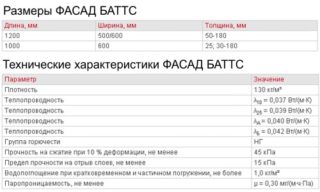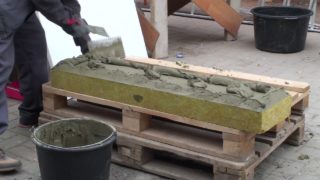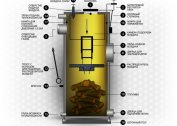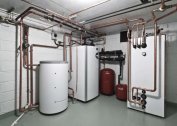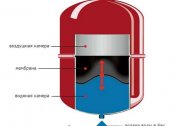Rockwool is a Danish company founded in 1909. It is a world famous manufacturer of construction products, materials and insulation. One of the main areas of activity is the production of mineral (stone, basalt) wool. It has more than 30 branches in Europe, America and Asia, including in the Russian Federation. One of the types of insulation Rockwool has the trademark Fasad Butts, serves to warm the outer walls of new and reconstructed buildings, including historical monuments. Russian plants of this brand are located in the Moscow, Leningrad and Chelyabinsk regions.
Insulation features
Rockwool Façade Butts mineral wool, manufactured by the company, is made from fibers several microns thick, obtained by centrifuging a molten mass consisting of basalt volcanic crushed stone and sand.
The transformation of fibers into Rockwool insulation boards differs from other methods:
- irregular entangled fiber structure during product formation;
- additional impregnation with non-combustible compositions that improve fiber adhesion;
- optimal pressing;
- sintering at a temperature not exceeding 1000 ° C.
In addition to thermal insulation, Rockwool panels are distinguished by excellent soundproofing qualities. In terms of protection efficiency, insulating material with a standard thickness of 80-100 mm can replace the thickness of the brickwork with one and a half red clay bricks. Minimal water absorption of the panels allows to apply a protective wet cement-sand or lime plaster - simple or with decorative properties. For reliability, it is better to use a fiberglass or metal reinforcing mesh with cells of 1-2 mm.
Insulation is sold in plastic bundles with a characteristic pattern and detailed instructions for use. A pack may, depending on the subspecies and thickness of the panels, contain from 1 to 8 units. The maximum mass of a pack with 8 sheets does not exceed 15.5 kilograms.
Slabs Rockwool Facade Butts can be used in the construction of a ventilated facade, when between longitudinal finishes - various sheet or thin-plate, ceramic, stone or artificial, polymer products - leave through longitudinal channels for free movement of outside atmospheric air.
Types of insulation Rockwool Facade
Materials can be classified according to several subspecies used for specific purposes and solving specific tasks of warming the facades of various buildings.
Butts
The standard, most used type of thermal insulation. It differs in its dimensions and the number of panels in the package:
- 1000x600x25, 8 pieces per pack; can be used in the restoration of facades for thermal protection of curved trim parts;
- 1000x600x80, 1 piece per pack;
- 1200x500x100, 2 pieces per pack;
Butts d
Double density plates, marked with the letter “D”: 1000x600x100, 3 pieces per pack;
Butts-Optima
Panels used as part of Rockwool wet facade systems with a thin RockFasade plaster layer:
- 1200x500x150, 2 pieces per pack;
- 1200х500х200, 1 piece per pack
Butts lamella insulation strips, not cut into plates and panels, are characterized by increased flexibility and lateral arrangement of fibers, perpendicular to the facade. Used for restoration, protection of round and broken parts of facades: 1200x150 / 200x50 / 200
Specifications
All panels and their subspecies of thermal insulation Rockwool Facade Butts, with the exception of density, have similar physical and technical characteristics:
- Thermal conductivity - 0.037 W / MK.
- Combustibility group - NG;
- Compressive strength - 40-45 kPa.
- Adhesive (tear-off) strength - 15 kPa.
- Water absorption from the volume - not more than 1%.
- Vapor permeability - 2 mg / MPa.
Material density
In accordance with the fact that the field of use of Rockwool facade heat-insulating boards is quite extensive, for different types and subspecies the density is accepted:
- Butts - 130 kg / m³;
- Butts-D - double, for the outer layer - 180, for the inner - 95 kg / m³;
- Butts-Optima - 110 kg / m³.
Insulation device and installation
Installation of insulation Rockwool Facade Butts is carried out on the outer surfaces of the walls using special adhesives. To simplify the initial fixation, often in addition to adhesive mastic, special dowels with wide hats are used that practically do not crush the material due to its high density.
In the case of using Rockwool for a ventilated facade, a frame or a subsystem of horizontal and vertical wooden or metal battens is fixed on the outer surface of the wall. Their sizes should coincide in modulus with the dimensions of the Rockwool slabs, as well as the sheet topcoat.
Panels with a strain are inserted into the cells and fixed with dowels, self-tapping screws, ribbons, wire. Sealing joints is provided with polyurethane foam or silicone mastic.
Advantages and disadvantages
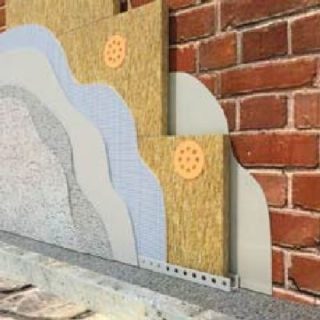
The positive qualities of the insulating material include:
- actual dual purpose - thermal and noise protection;
- high vapor permeability, allowing steam to escape outside, which is formed indoors from temperature extremes and human activity;
- increased modulus of elasticity, which does not allow plates to receive damage from deformation of walls, protected facades;
- incombustibility and high fire safety;
- ease of installation, allowing for hand-made performance;
- the service life declared by the manufacturer is not less than 50 years;
- resistance to biological pollution and damage by harmful microorganisms and insects;
- lack of secretions of harmful fumes and dust, unfavorable for human breathing.
This type of insulation has practically no drawbacks. These include a relatively high cost. But reliable operation over a long period of time makes this drawback insignificant.
Rockwool Façade Butts is used for insulation and noise insulation of apartment buildings and brick houses during their construction or major repairs, for private individual construction - from country houses to suburban or inner-city mansions and cottages. Thermal insulation Rockwool can be successfully used for warming attics and the installation of additional living spaces such as attics or mezzanines.


